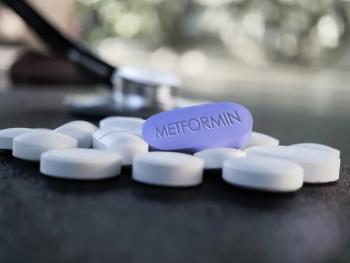In a recent review, investigators highlighted the impact of postpartum anemia (PPA) in postpartum women and management methods.1
Takeaways
- Postpartum anemia (PPA) affects 22% to 50% of women in developed countries, primarily because of untreated iron deficiency and peripartum blood loss.
- PPA is linked to increased maternal morbidity, including fatigue, depression, impaired cognition, and reduced maternal-child bonding, highlighting the importance of effective management.
- Guidelines recommend measuring hemoglobin (Hb) levels within 24 hours after birth, especially when blood loss exceeds 1000 ml, and conducting complete blood counts and serum ferritin levels at 4 to 8 weeks postpartum
- Significant risk factors for severe PPA include predelivery Hb under 10 g/dl, postpartum hemorrhage, episiotomy, prolonged first stage of labor, primiparity, prior cesarean delivery, instrumental delivery, and antepartum hemorrhage.
- Intravenous iron supplementation is shown to significantly improve Hb levels and reduce physical fatigue at 6 to 12 weeks postpartum, making it an effective treatment option for PPA.
PPA is a severe public health issue present in approximately 22% to 50% of women in developed countries. Causes of PPA include untreated iron deficiency (ID) and peripartum blood loss. Data has also linked PPA to increased morbidity in mothers, making management vital.
Approximately 42% of pregnancies worldwide are impacted by anemia, defined by the World Health Organization as hemoglobin (Hb) values under 11 g/dl. ID is the most common cause of anemia during pregnancy, often occurring because of increased maternal erythropoiesis.
These low iron stores may carry over from pregnancy to the postpartum period, which is a critical period for mothers and their infants. Recovery of iron deficiency anemia also takes longer following pregnancy, aggravating adverse effects.
Heavy menstrual bleeding also impacts anemia risk.2 HMB symptoms may present in up to 50% of reproductive-aged women, indicating a need to develop comprehensive databases with evidence-based research about HMB to improve the environment for delivery.
While many guidelines define PPA as Hb values under 10 g/dl, recent recommendations have suggested defining PPA as Hb values under 11 g/dl at 1 week postpartum and under 12 g/dl at 8 weeks postpartum.1 Severe PPA is defined as Hb values under 7 gl/dl.
Certain guidelines recommend measuring Hb values within 24 hours after birth and when blood loss is over 1000 ml, with severe obstetric hemorrhage defined as an additional cause of PPA. Other factors contributing to PPA include inflammatory or infectious disorders and folate and vitamin B12 deficiency.
Significant risk factors for severe PPA include predelivery Hb under 10 g/dl and postpartum hemorrhage (PPH), with odds ratios (ORs) of 30.6 and 8.4, respectively. Three percent to 8% of deliveries are impacted by PPH, and multiple pregnancy complications have been linked to increased blood loss.
Episiotomy, first stage of labor over 9 hours, primiparity, and prior cesarean delivery are additional complications linked to severe PPA, with ORs of 3.19, 2.50, 2.50, and 2.43, respectively. Additionally, instrumental delivery and antepartum hemorrhage have ORs of 2.72 and 4.51, respectively, for immediate PPA after childbirth.
Adverse outcomes associated with anemia include impaired concentration, weakness, dizziness, palpitations, and breathlessness. Among mothers, PPA increases the risks of morbidities including fatigue, depression, and impaired cognition, adversely impacting maternal-child bonding and the ability of mothers to care for their newborns.
Data has indicated a 1.66-fold increased risk of depression symptoms among postpartum women with anemia vs those without anemia. However, depression scores were significantly reduced by intravenous iron vs oral iron therapy or placebo, with a mean difference of -1.48.
Additionally, data has found reduced mother and child interaction among mothers with anemia vs those without anemia or once anemic with successful iron treatment. This indicated reduced quality of life and wellbeing of the mother and child because of anemia.
Guidelines for anemia screening among postpartum women remain limited. Current recommendations include measurement of Hb concentration following significant peripartum bleeding. All women should also receive a complete blood count plus a serum ferritin level at 4 to 8 weeks postpartum.
UK guidelines recommend measurement of Hb after delivery, a blood loss over 500 ml, detection of antenatal uncorrected anemia, and symptoms indicating possible anemia. However, an optimal time for postpartum testing for anemia has not been established.
Achieving an adequate iron status is vital for preventing PPA, with data indicating improved postpartum recovery of hematological and iron parameters from iron supplementation after delivery. Guidelines include 80 to100 mg elemental iron daily for 3 months to manage mild to moderate PPA.
Data has also suggested intravenous iron as the optimal first-choice treatment for PPA. In one study, women receiving intravenous iron had an increase in Hb value at 6 weeks postpartum of almost 1 g/dl. Aggregated physical fatigue was also significantly reduced among these women at 12 weeks postpartum.
This data indicates physical and mental impacts of PPA, with improved outcomes following iron supplementation. Investigators concluded, “clinicians should develop approaches and clinical care pathways to optimize anemia detection and treatment after delivery.”
References
- Neef V, Choorapoikayil S, Hof L, Meybohm P, Zacharowski K. Current concepts in postpartum anemia management. Current Opinion in Anaesthesiology. 2024;37(3):234-238. doi:10.1097/ACO.0000000000001338
- Kronemyer B. How heavy menstrual bleeding impacts iron deficiency and anemia. Contemporary OB/GYN. August 8, 2023. Accessed June 3, 2024. https://www.contemporaryobgyn.net/view/how-heavy-menstrual-bleeding-impacts-iron-deficiency-and-anemia











